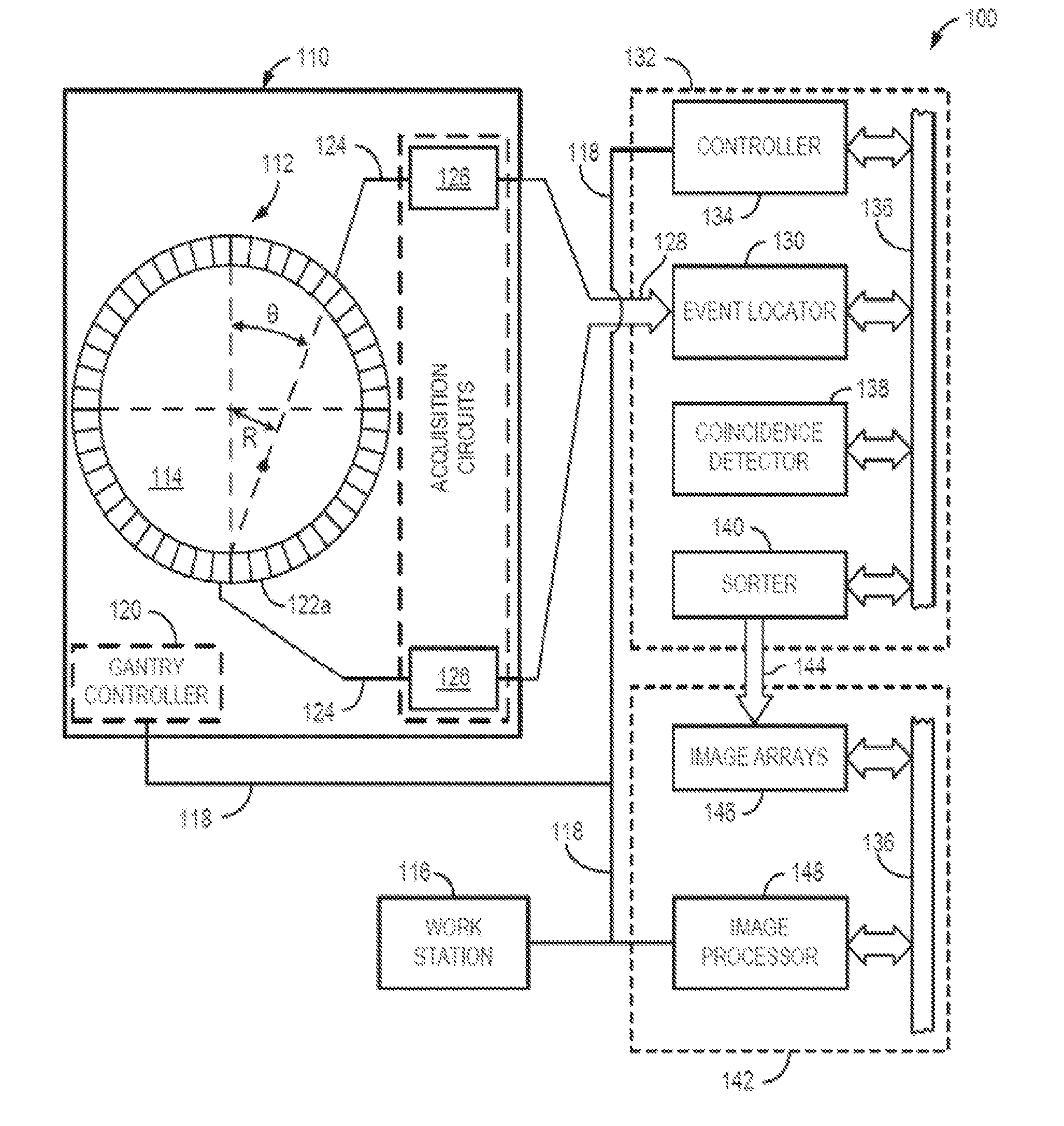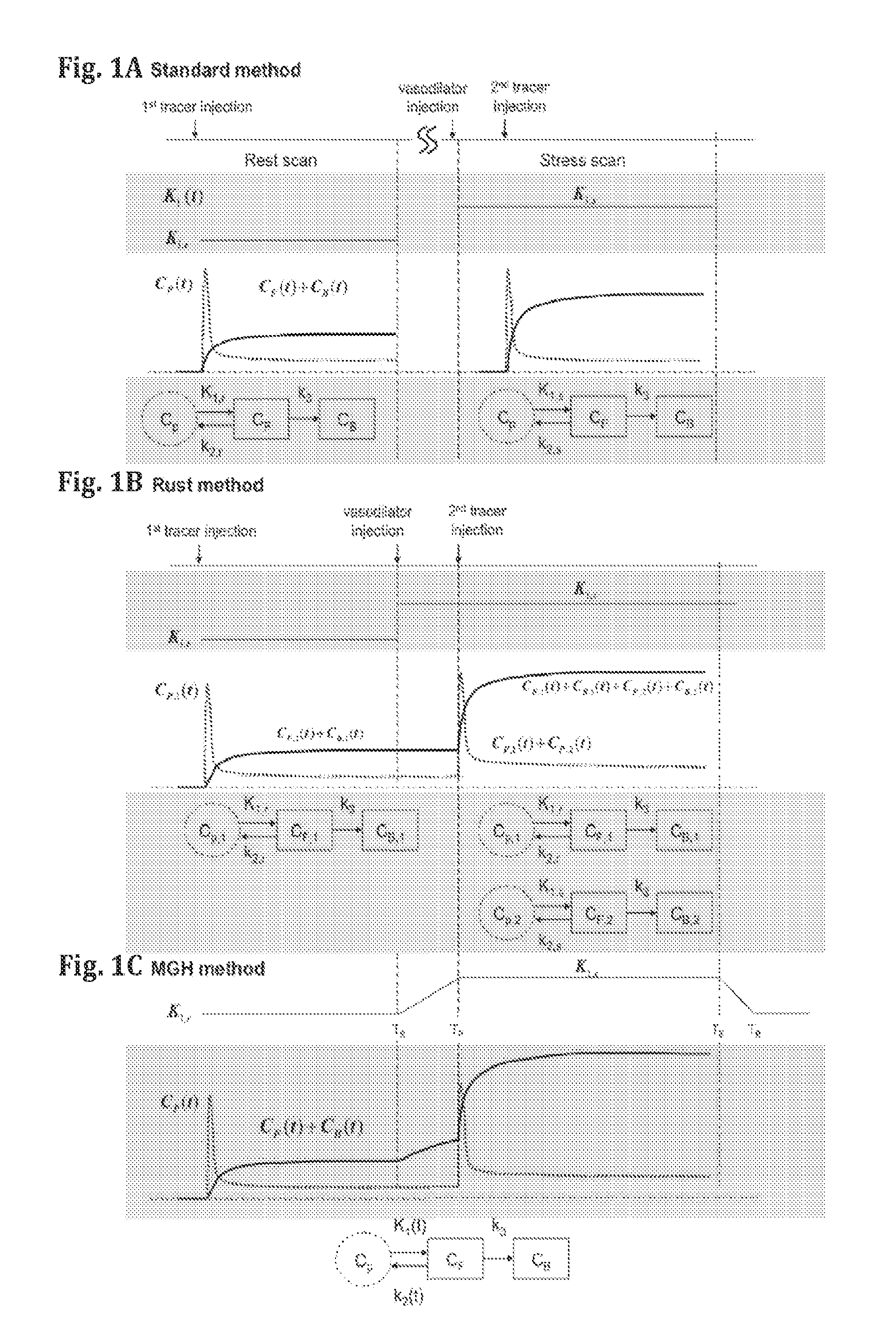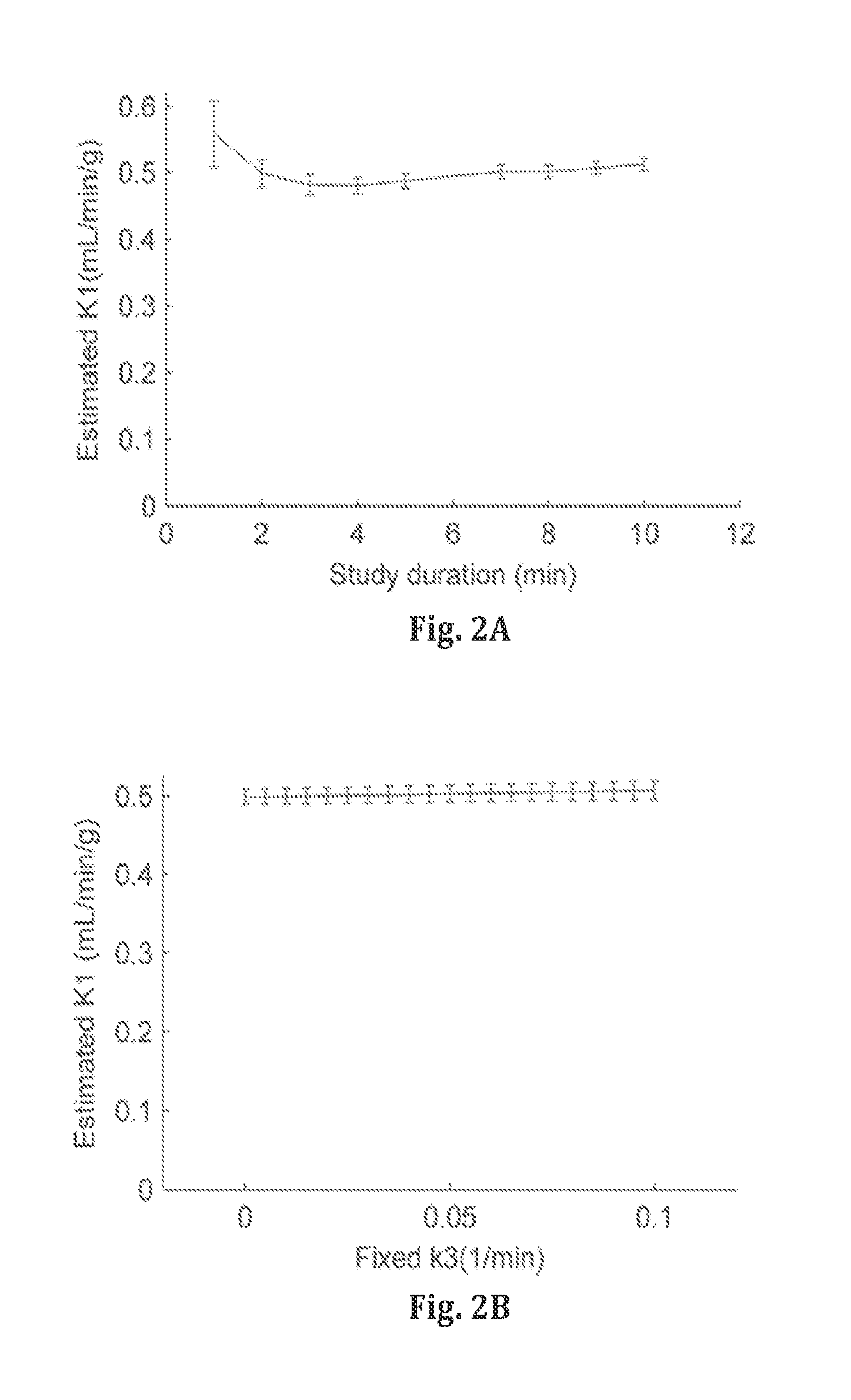System and method for single-scan rest-stress cardiac pet
a single-scan, rest-stress technology, applied in tomography, diagnostic recording/measuring, applications, etc., can solve the problems of large public health burden of coronary artery disease (cad), limited clinical application that makes full use of quantitative capabilities, and inability to fully utilize quantitative capabilities, etc., to achieve long tissue residence periods, high first-pass extraction rate, and few or slow biochemical reactions
- Summary
- Abstract
- Description
- Claims
- Application Information
AI Technical Summary
Benefits of technology
Problems solved by technology
Method used
Image
Examples
example 1
Non-Steady State Modeling Approach
[0124]To evaluate and compare the methods proposed in this work, simulation studies were performed based on the kinetic parameters derived from human studies conducted with 18F-Flurpiridaz, formerly known as 18F-BMS747158-02 (Lantheus Medical Imaging, North Billerica, Mass.). As a pyridazinone analog, 18F-Flurpiridaz binds to the mitochondrial complex I with high affinity. The combination of high first pass extraction and complex I binding ensure a high uptake in the myocardium with long residence time, due to the high mitochondrial density in the myocardial wall. Data from a rat model have shown that 18F-Flurpiridaz has an extraction fraction of greater than 90% over the physiological MBF range, which makes it an attractive perfusion tracer. Validation of MBF measured with 18F-Flurpiridaz has been performed by Nekolla et al. in pigs by comparison to microsphere and 13N-ammonia flow measurements. Good agreement between the MBF from 18F-Flurpiridaz a...
example 2
Advanced Modeling Approach
[0135]Aspects of the present system and methods relate to validation of sequential and concurrent rest-stress cardiac PET in acute ischemic porcine model. One approach involves validation of the measurement of myocardial blood flow in a sequential rest-stress study. The accuracy and precision with which MBF (in mL / g / min) can be measured is, in one example, evaluated in pigs using sequential rest-stress 18F-Flurpiridaz cardiac PET. Estimates of MBF obtained with the present approaches in dynamic 18F-Flurpiridaz are compared to flows measured with microspheres over a large range of flow values.
[0136]With respect to an example surgical protocol, eight domestic swine of either sex can be used. Endotracheal intubation and mechanical ventilation can be performed under general anesthesia. All pigs can be pre-medicated with the intravenous administration of thiamylal (22 mg / kg) prior to intubation and surgery. Anesthesia will be maintained with Halothane (0.5-1.5%)...
PUM
| Property | Measurement | Unit |
|---|---|---|
| positron emission tomography | aaaaa | aaaaa |
| PET | aaaaa | aaaaa |
| PET imaging | aaaaa | aaaaa |
Abstract
Description
Claims
Application Information
 Login to View More
Login to View More - R&D
- Intellectual Property
- Life Sciences
- Materials
- Tech Scout
- Unparalleled Data Quality
- Higher Quality Content
- 60% Fewer Hallucinations
Browse by: Latest US Patents, China's latest patents, Technical Efficacy Thesaurus, Application Domain, Technology Topic, Popular Technical Reports.
© 2025 PatSnap. All rights reserved.Legal|Privacy policy|Modern Slavery Act Transparency Statement|Sitemap|About US| Contact US: help@patsnap.com



